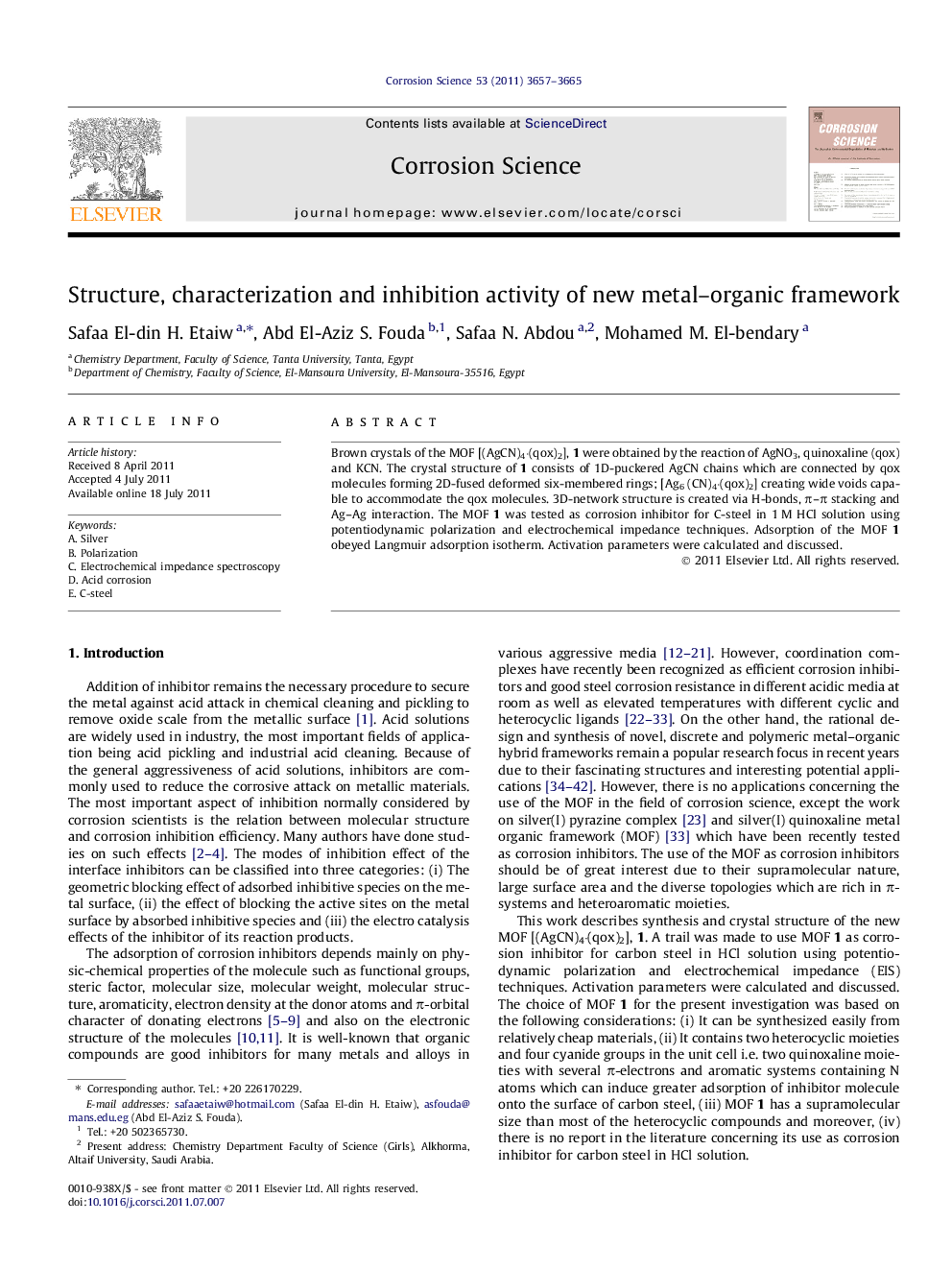| Article ID | Journal | Published Year | Pages | File Type |
|---|---|---|---|---|
| 1469669 | Corrosion Science | 2011 | 9 Pages |
Brown crystals of the MOF [(AgCN)4·(qox)2], 1 were obtained by the reaction of AgNO3, quinoxaline (qox) and KCN. The crystal structure of 1 consists of 1D-puckered AgCN chains which are connected by qox molecules forming 2D-fused deformed six-membered rings; [Ag6 (CN)4·(qox)2] creating wide voids capable to accommodate the qox molecules. 3D-network structure is created via H-bonds, π–π stacking and Ag–Ag interaction. The MOF 1 was tested as corrosion inhibitor for C-steel in 1 M HCl solution using potentiodynamic polarization and electrochemical impedance techniques. Adsorption of the MOF 1 obeyed Langmuir adsorption isotherm. Activation parameters were calculated and discussed.
Graphical abstractThe structure of MOF [(AgCN)4·(qox)2], 1 consists of 1D-puckered AgCN chains which are connected by qox molecules forming 2D-fused deformed six-membered rings creating wide voids capable to accommodate the qox molecules. 3D-network structure is created via H-bonds π–π stacking and Ag–Ag interaction. The MOF 1 was tested as corrosion inhibitor for carbon steel in 1 M HCl solution using potentiodynamic polarization and electrochemical impedance techniques.Figure optionsDownload full-size imageDownload as PowerPoint slideHighlights► Brown crystals of the MOF [(AgCN)4·(qox)2], 1 were obtained. ► 1D-puckered AgCN chains which are connected by qox molecules forming 2D-fused deformed six-membered rings. ► 3D-network structure is created via H-bonds π–π stacking and Ag–Ag interactions. ► The MOF 1 was tested as corrosion using Potentiodynamic polarization and electrochemical impedance.
